How do you get a large organization like Shutterstock to develop a shared understanding of the voice of the customer? I took the lead in overhauling our user research process with that objective top of mind.
- Things I did
- Information architecture, stakeholder management, project management, web development
- Tools I used
- Airtable, UserTesting, Lucidchart
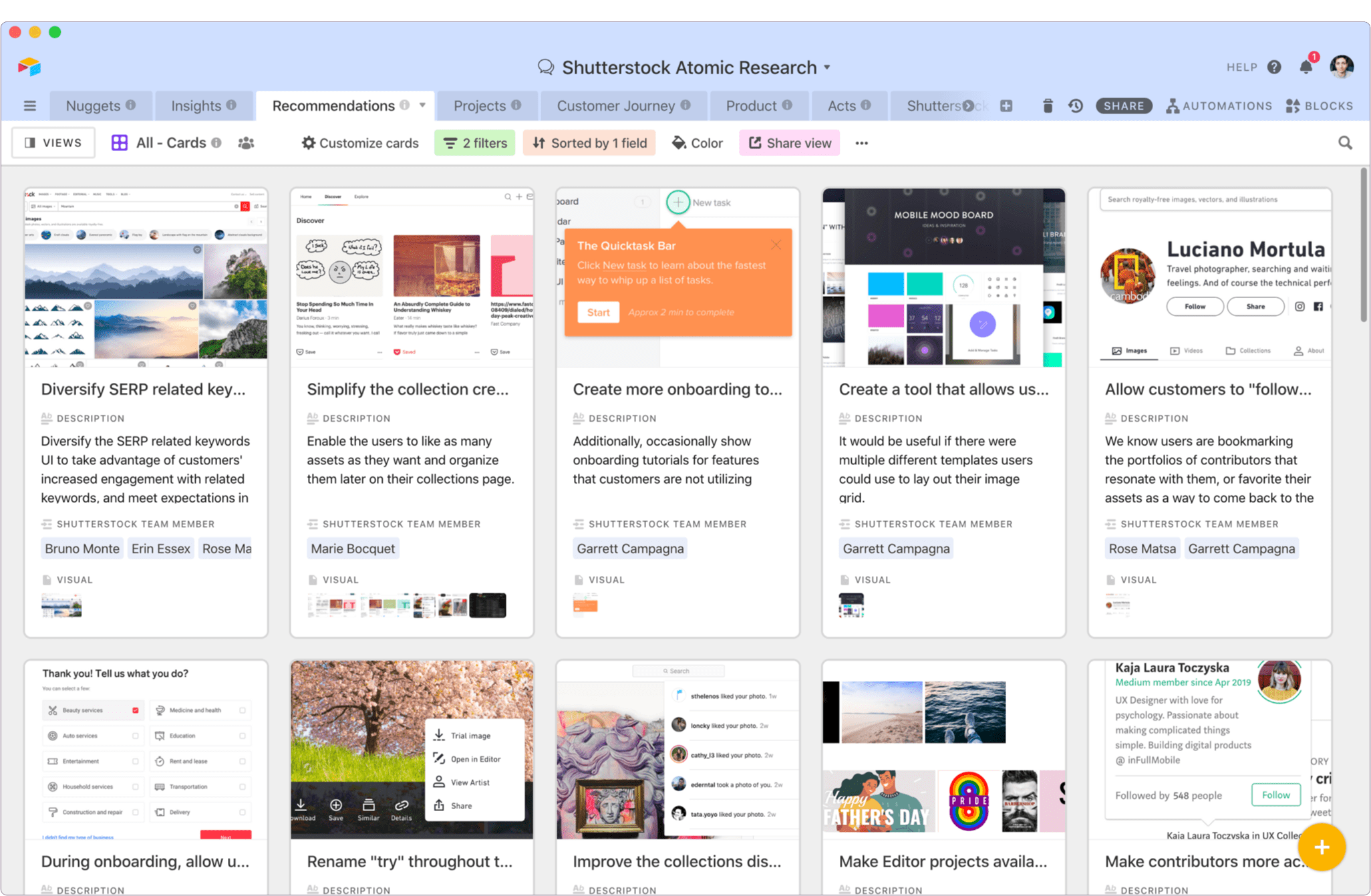
The challenge
Re-tool and overhaul the customer feedback gathering, analyzing, and sharing process to make research insights across Shutterstock more accessible and more actionable, and bring a user-centric perspective to roadmap planning and overall strategic decision making.
My role
I led a cross-functional team in transitioning the Shutterstock UX user research process from ad-hoc, report-based, usability testing-type (mostly) research to a continuous customer feedback loop to help stakeholders confidently pinpoint problems, and identify themes and trends over time.
Unpacking the challenge

A new project lands on your desk and one of the first things you do to unpack and understand the brief, user story, or problem, is to dig up any prior, related user research and customer feedback. It is essential to put things in perspective at this initial stage: did we try to solve this problem before? Why did we fail? What did we learn from it?
You go looking into research archives and put a call out to your team in case they know of anything. If you are lucky, someone links you to a deck with a summary and some bullet points. If you have the luxury of time, you go down the rabbit hole and watch entire recorded customer interviews to pull out the relevant bits. Sometimes, all you can get is a vague “I think so-and-so attempted something like this before,” but nothing of real substance. Quite often, that so-and-so may not be at the company anymore.
And so it goes: the project has to progress eventually, you probably end up learning similar things like those before you (you likely also repeat the same mistakes), put them in some kind of report that you share with a few folks that need to be informed, and you move on to the next thing. It's a cycle that wastes time and resources, despite our best intentions.
There's a better way
How do you break that cycle? How do you make research knowledge easily findable, digestible, and actionable? How do you ensure that the knowledge you have access to is still valid and relevant? How do you create a single source of truth about who your customers are so that employees across the organization can develop a shared understanding?
Enter Atomic Research.
Atomic Research is an approach to managing research knowledge that redefines the atomic unit of a research insight. Instead of reports, slide decks, and dashboards, the new atomic unit of a research insight is a nugget.
Tomer Sharon, Foundations of Atomic Research
Much like Brad Frost's atomic design methodology, nuggets are the basic buildings blocks of atomic research, and can be combined to form insights, which are nothing more than synthesized takeaways from one or more nuggets; the more nuggets come together to form an insight, the stronger that insight is. Insights themselves can then funnel into recommendations, which are actionable hypotheses about one or more insights.
Adapting atomic research for Shutterstock
The implementation of atomic research at Shutterstock was based on Tomer Sharon's documented explanation of how he implemented the framework at WeWork. In adapting the process for Shutterstock, we simplified some of the original terminology and IA, and deliberated what sort of information we would collect and how it would be organized and tagged.
To make all this possible we formed a pilot group comprised of members of the UX team, as well as representatives from the Product team and our customer care team. Like WeWork, we chose to also use Airtable for capturing, organizing, and sharing our research knowledge (WeWork used Airtable before building their own in-house tool). We began testing and refining the information architecture by entering customer feedback from various sources into the database, including user research we were doing at the time as well as feedback from customer calls and emails to our customer care team.
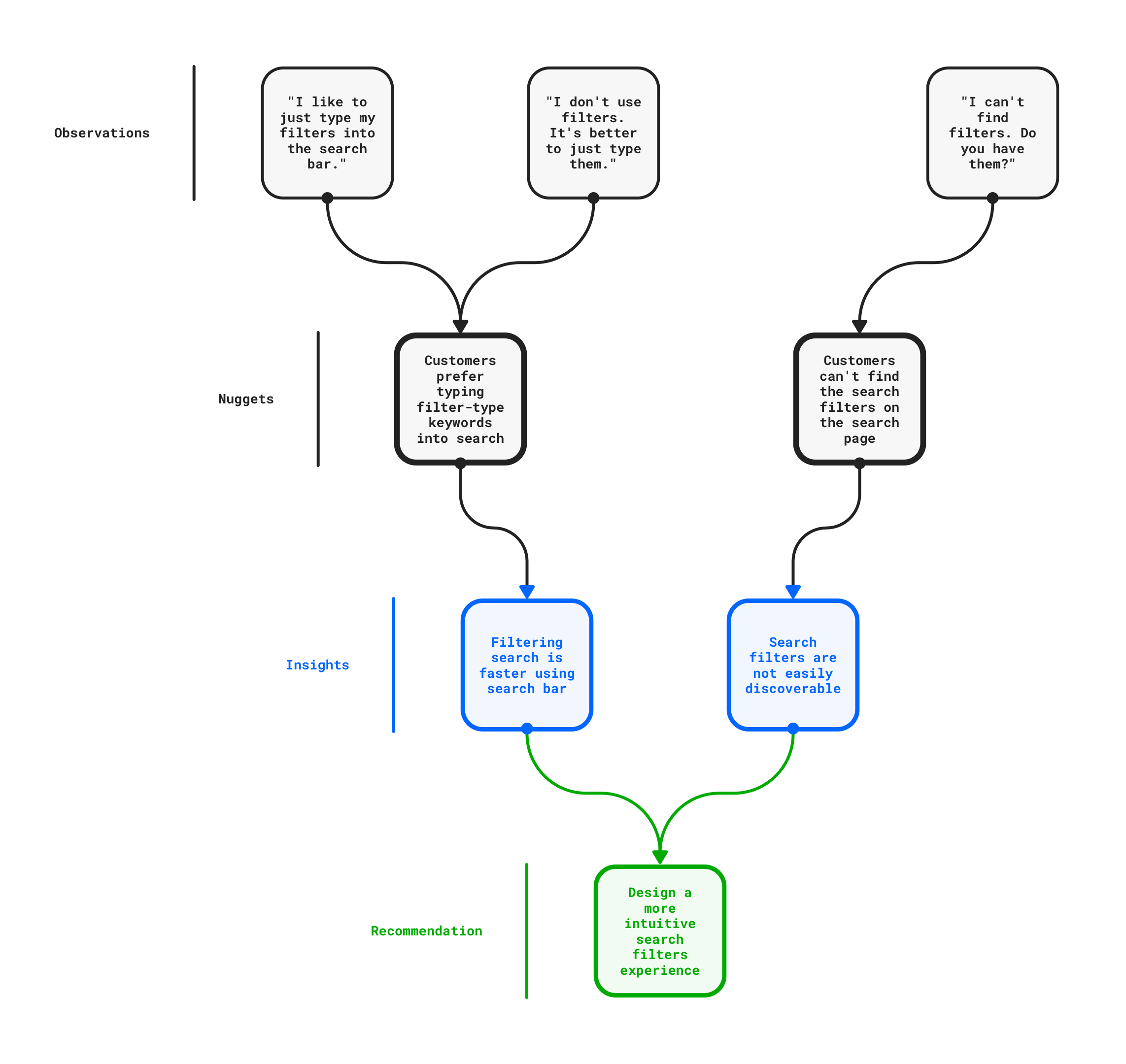
Getting the right insights to the right team
Each team needed to have customized views that only filter in relevant feedback and insights, as well as the ability to further slice and dice that information. For this reason, initial views were set up with the proper filters to service key teams across the organization and make onboarding easier. Furthermore, each stakeholder can create personal views with exactly the filters they are interested in. Want to see what customers are saying about the Pricing page? You can do that. Interested in analyzing all the feedback relating to the representation of diversity in Shutterstock's stock image catalog? You can do that, too.
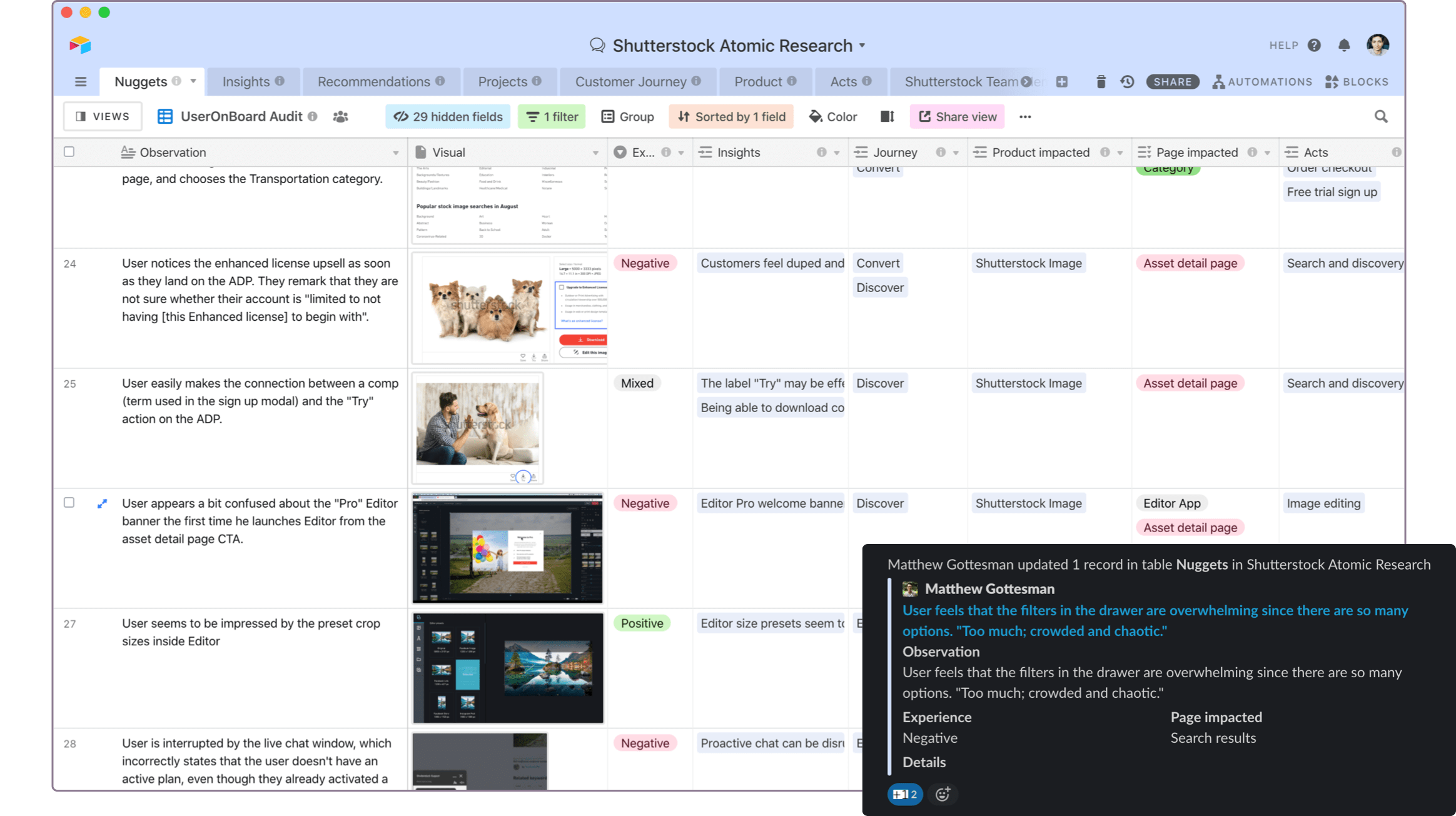
A key benefit of this process is that feedback that is gathered from a team working on a project that doesn't relate to said project can still be entered into the database, and, as long as it is tagged appropriately, it will reach the right team. This was previously difficult to do: you'd have to make a mental note to reach out to the other team to let them know, and you may also collate all the other feedback in the report deck. Most of the time that feedback gets siloed and forgotten about when it could provide context to existing insights that are siloed somewhere else.
Not just user research
Customer feedback comes from many different places, not just UX research. To truly understand our customers and be able to identify the themes that can help us translate problems into opportunities, we need to have a 360° view.
With atomic research, all feedback enters the database in the same currency: an observation of something that the customer said; whether that is a video clip from a research interview, an email snippet from customer support, an App Store review, or a note that an account manager passed on from an Enterprise client. This kind of feedback is continuous and, when considered together, over time contributes to a deeper understanding of who the customer is and what their needs are.
To diversify the continuous loop of feedback flowing into Airtable (customers typically call Shutterstock customer support for purchasing and licensing issues, for example) we placed feedback triggers inside key experiences on the Shutterstock website to encourage customers to send us feedback via on-site forms. Form entries are routed directly into Airtable, where they are reviewed and tagged regularly.
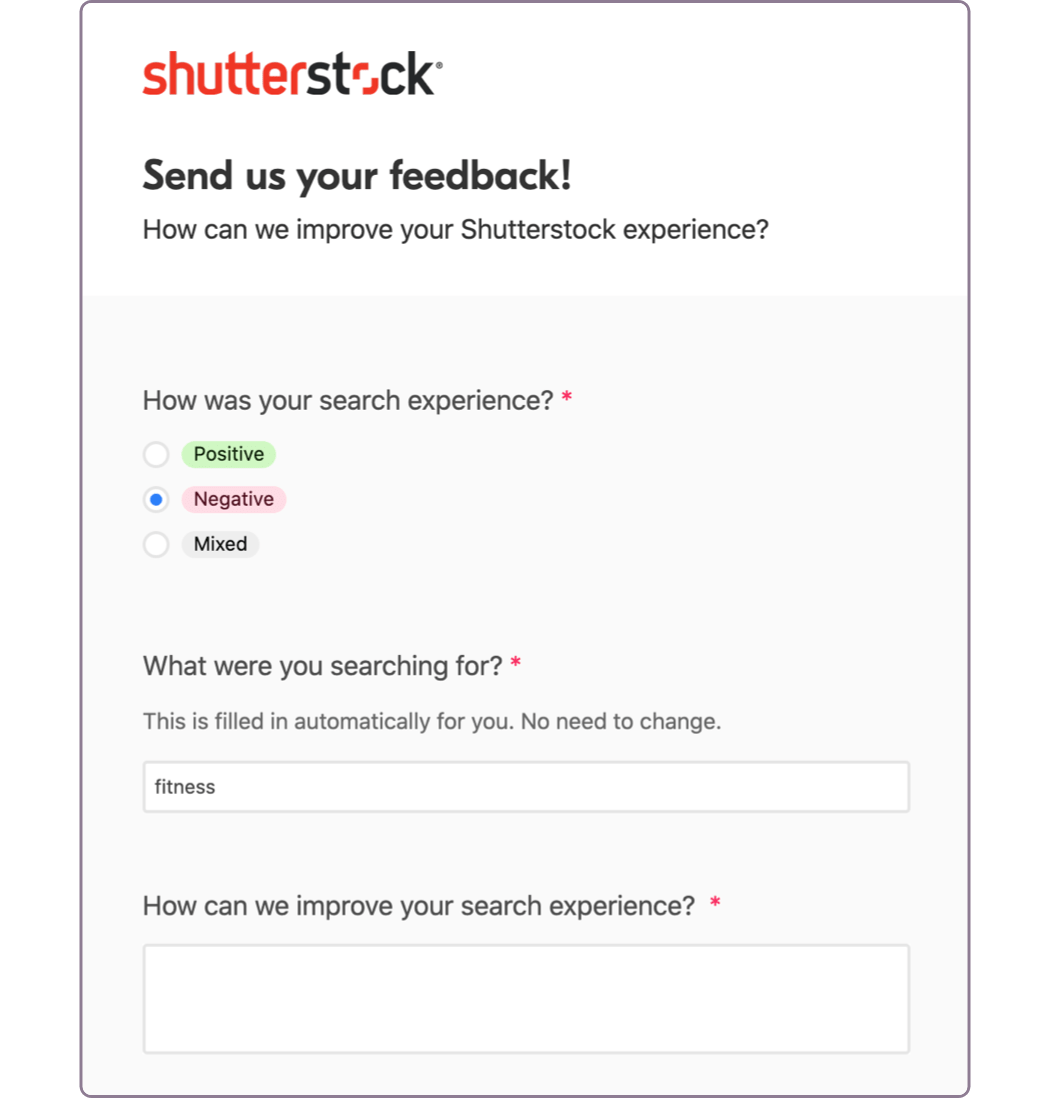
Closing the feedback loop
To make sure that our growing database of customer insights didn't become stale or unmanageable, I visualized and proposed a nugget lifecycle process to serve as a guide in ensuring that checks and balances were in place. We took advantage of Airtable's formula field to automatically assign a status to each nugget and insight record depending on their relationship to other records in the database. For example, an in-progress nugget (any nugget that has been reviewed and has been associated with an insight, that is) can be filtered out of the way to prioritize newer nuggets still waiting to be reviewed.
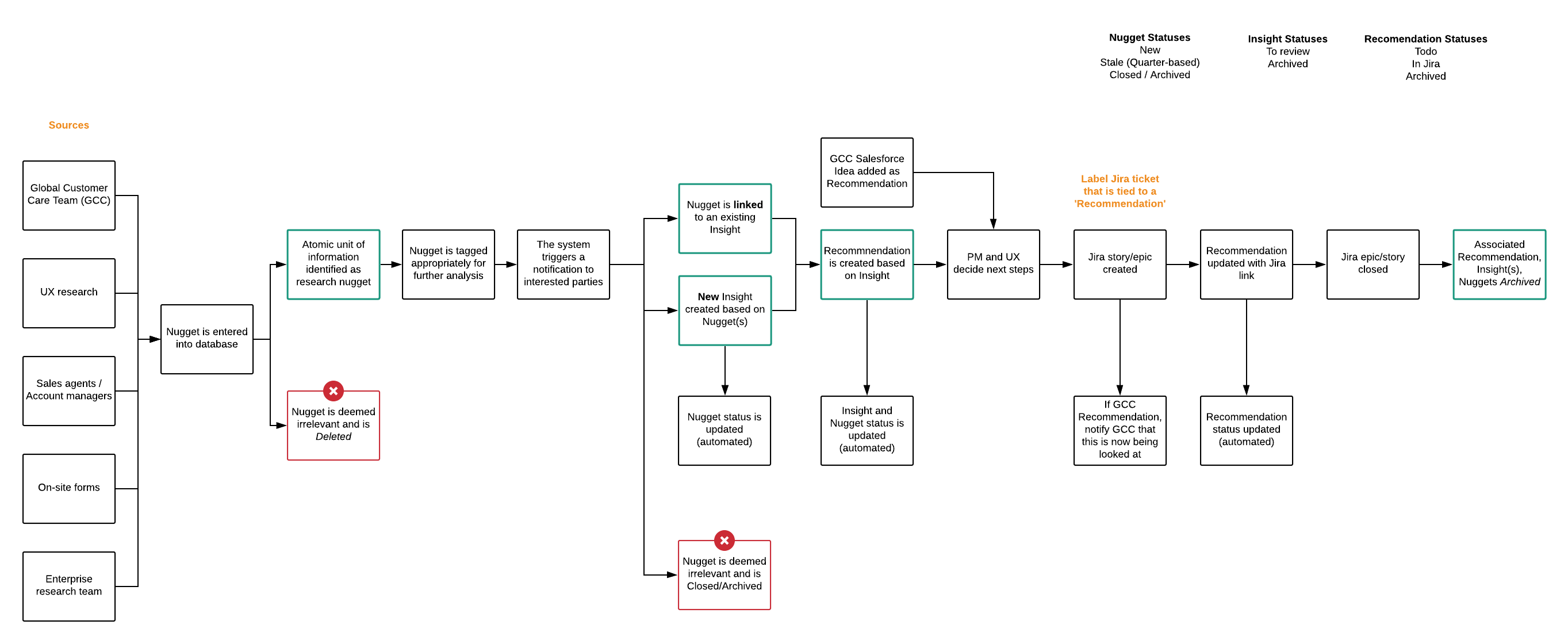
Turning knowledge into action
The final and crucial step in the atomic research process is translating insights into actionable recommendations and hypotheses that a whole team can rally behind. By doing so we can not only answer the question of what it is that we can work on but also what it is that we should work on. To aid in the latter, nuggets are assigned an observation score as they are entered into the database, which carries into the associated insights and recommendations, allowing teams to quickly identify high-impact recommendations and prioritize them accordingly.
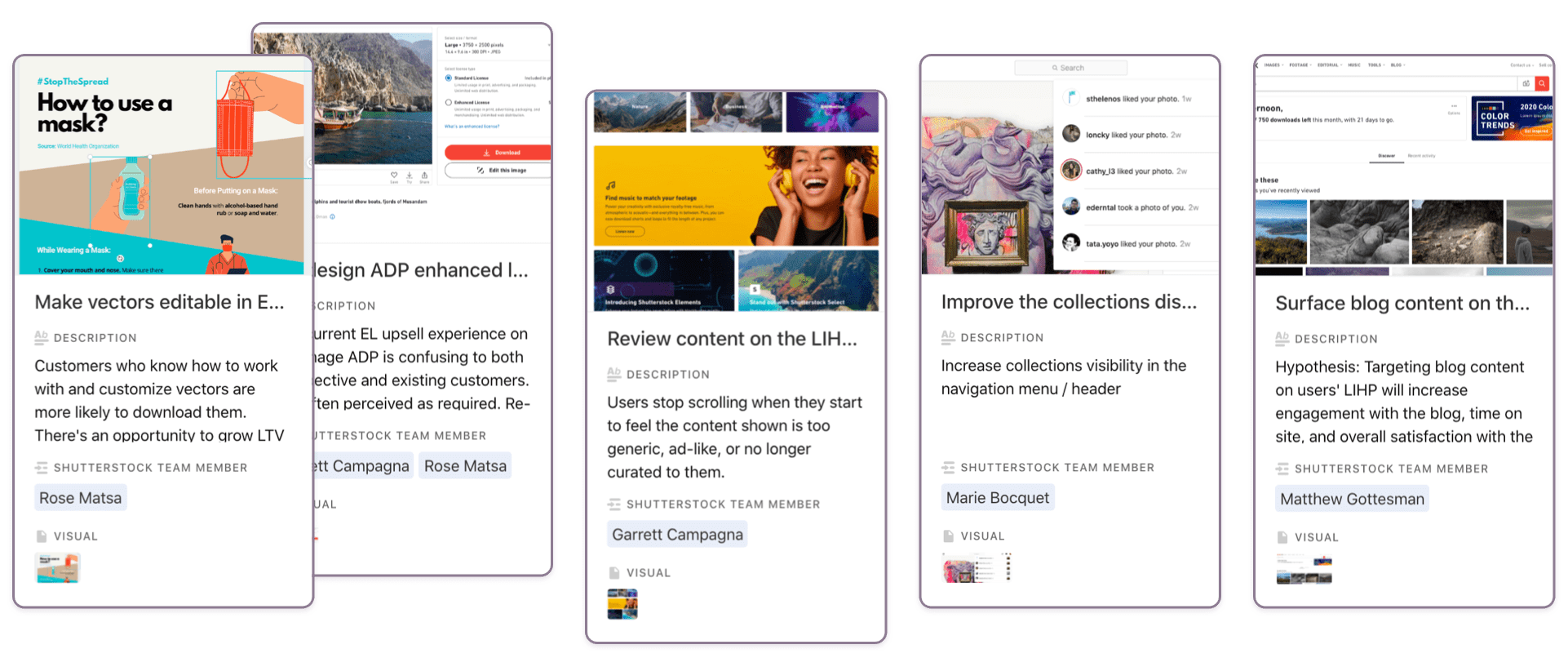
There's an important benefit to ideas borne out of user research that isn't immediately apparent: being able to support these ideas with the voice of the customer, while quantifying the estimated level of impact in terms of revenue, gives leverage to teams to get buy-in from stakeholders, offsetting the top-down approach to strategy, and giving designers, engineers, and product managers a sense of ownership and pride over their work.
Taking it a step further
Airtable is a powerful application, but it can be overwhelming. Early on in the process, I saw resistance from individuals and some teams to adopting the process because it felt like another tool they had to use; Jira is complicated enough.
Furthermore, it's difficult to convince important stakeholders to spend their time poking around what at first glance looks like a spreadsheet. How can we translate and present the insights from within our atomic research database into something more digestible, more memorable, and more impactful? The answer might be in Airtable's API, which allows us to completely customize how we present this information; a simple proof-of-concept website I created elicited many positive reactions. As we continue to evolve the atomic research process, investing time in evaluating such options is going to be essential.
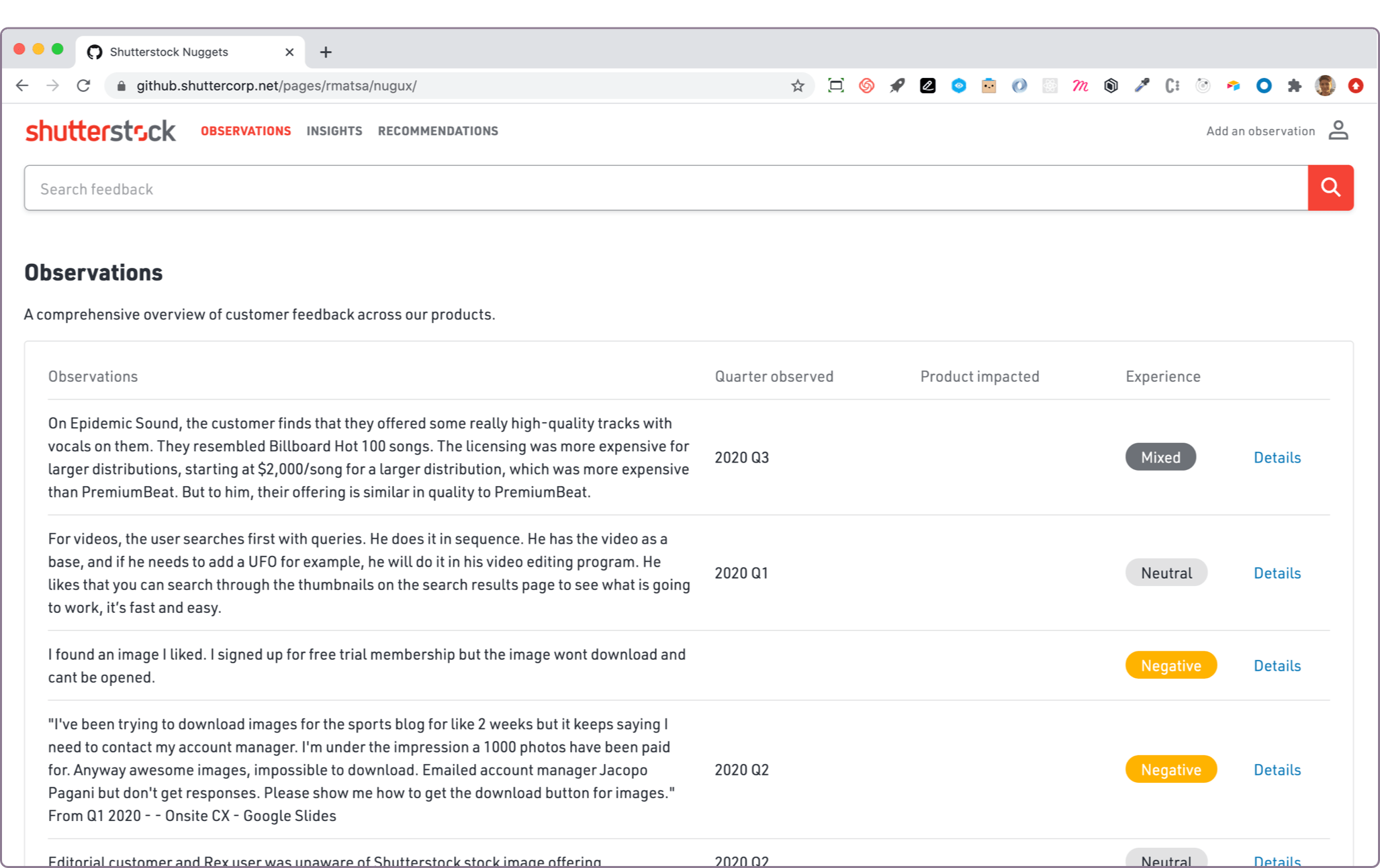
Closing thoughts
In a time when large company executives struggle to see the usefulness of user research, evaluating and optimizing how we gather, analyze, and share customer feedback in a way that directly supports revenue-generating opportunities is critical.
Ultimately, deeply understanding the user can uncover opportunities for growth and innovation that we can't otherwise see. If we don't know what the users need, we'll only conceive of strategy that is based purely on business outcomes. Yes, let's go and generate more subscriptions. But why would people want to buy a subscription instead of, say, a single-use pack? That is the sort of question that research can answer, which would make achieving that business outcome all the more possible.